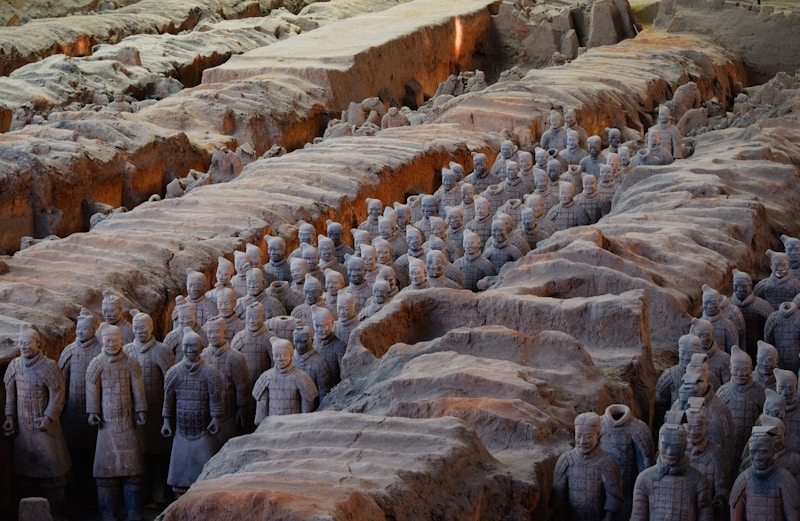Questions and Answers
What is one distinguishing feature of Hindi vocabulary mentioned in the text?
Incorporation of loanwords from Dutch and Persian
How does sandhi impact the Hindi language?
It alters adjacent sounds for smoother pronunciation
Which aspect of Hindi culture is NOT mentioned in the text?
Performing classical dances like Bharatanatyam
What is a unique characteristic of Hindi grammar mentioned in the text?
Signup and view all the answers
What genres of Hindi literature are mentioned in the text as exploring new trends?
Signup and view all the answers
Which literary work is known for its revolutionary ghazal in Hindi literature?
Signup and view all the answers
What is the distinctive script used for writing Hindi?
Signup and view all the answers
Which genre of Hindi literature reflects socioeconomic realities and religious beliefs?
Signup and view all the answers
Who composed the epic poem Ramcharitmanas during the Renaissance period?
Signup and view all the answers
Which language influenced the Persianized Urdu poetry in Hindi literature?
Signup and view all the answers
Study Notes
Exploring Hindi: A Comprehensive Look at Language and Culture
As one of the world's most widely spoken languages with nearly half a billion speakers, Hindi is not only a lingua franca across Indian states but also a fascinating embodiment of India’s diverse cultural heritage. In this exploration, we will delve into various aspects of Hindi, including its rich literary tradition, expansive vocabulary, unique cultural expressions, intricate grammatical structure, and distinctive Devanagari script — all facets that contribute to the dynamic fabric of modern Hindi culture.
Hindi Literature
Hindi literature has spanned over a thousand years, flourishing from ancient Sanskrit roots through medieval folk epics and contemporary fiction. Notable contributions come from works like the Ramcharitmanas, composed by Tulsidas during the Renaissance period; Urdu Padshah Nama authored by Chiragh Ali Shah and Mirza Ghalib in Persianized Urdu poetry; and more recent pieces such as Amrita Pritam's revolutionary ghazal and Dasarathi Devi's progressive stories.
Modern Hindi literary movements have enriched Hindi prose, poetry, drama, and narrative forms, reflecting socioeconomic realities and religious beliefs. Established genres are Punjabi folk songs (bhangra) and the epic poem Mahabharata. Emerging genres highlight new literary trends, such as the use of dialect in regional writing like Bhojpuri or Awadhi, feminist perspectives in women writers' works, and science fiction and fantasy inspired by local mythology.
Hindi Vocabulary
The Hindi lexicon mirrors India's vast geographical spread and multifaceted history. It boasts several layers of loanwords derived from Sanskrit, Arabic, Persian, Portuguese, Dutch, English, French, Russian, and other sources. This extensive borrowing creates remarkable linguistic diversity within Hindi itself and makes it easier for nonnative speakers to learn Hindi because they can recognize familiar words from their own native languages.
Apart from foreign influences, Hindi has its indigenous synonyms, idioms, slang, acronyms, and colloquialisms. For instance, northerners may say "chai pe charcha karo," meaning discuss ideas over tea, while southerners might prefer "kapi nashta." Similarly, urbanites often speak in highly stylized Hindustani, whereas rural communities maintain strong ties to traditional Prakrit dialects.
Hindi Culture
Unique social customs and traditions tightly knot themselves around Hindi culture. These practices span food habits, festivals, rituals, music, dance, and fashion, offering insightful glimpses into the lives of people from different regions of India. Some examples include celebrating Diwali, consuming cuisine specific to each state, singing devotional songs called Bhajans, performing classical dances like Kathak or Kuchipudi, dressing up in vibrant colors for Holi, and wearing traditions saris.
Additionally, filmmakers and artists, both old and new, creatively express Hindu society's ethos and aesthetics throughout films, graphic novels, and advertisements. Bollywood movies, specifically, have showcased Hindi's evolution alongside India's progression from Independence until today.
Hindi Grammar
Although considered relatively straightforward compared to neighboring languages, Hindi maintains complex linguistic structures and rules. Its pronunciation system relies upon ten vowels, combined with 36 consonants to form words. Verbs exhibit three conjugations based on tense and aspect, while nouns reveal gender distinctions under numbered declensions—all forming grammatically correct sentences. Despite slight variations between Northern and Southern Hindi dialects, these fundamental principles remain consistent across India.
One notable feature of Hindi grammar involves sandhi, a process where adjacent sounds alter to create smoother pronunciation—something uncommon among European languages. This characteristic adds an extra layer of complexity yet lends a musical quality to the language when properly executed.
Hindi Script
Lastly, Hindi uses the Devanagari script, which originated in ancient India and has evolved into a visually appealing alphabet consisting of 33 letters. Each character represents phonemes found exclusively in Hindi and other Indo-European languages, making it easily recognizable even outside South Asia.
Devanagari features horizontal lines running left to right, thereby reading exactly like English or Greek. When written, it appears neat and organized, facilitating the learning curve for those unfamiliar with its cursive nature. Furthermore, the simplicity of Devanagari encourages literacy among beginners.
In conclusion, Hindi is much more than just a mode of communication. It serves as a bridge connecting India's past and present, linking together the nation's diverse cultures, histories, and aspirations. As you journey deeper into understanding Hindi, immerse yourself in discovering the many wonders of this magnificent language and its accompanying culture.
Studying That Suits You
Use AI to generate personalized quizzes and flashcards to suit your learning preferences.
Description
Delve into the rich world of Hindi, exploring its literature, vocabulary, culture, grammar intricacies, and unique Devanagari script. From ancient epics to modern literary movements, this quiz offers insights into the multifaceted aspects that make Hindi a vibrant expression of India's heritage.




